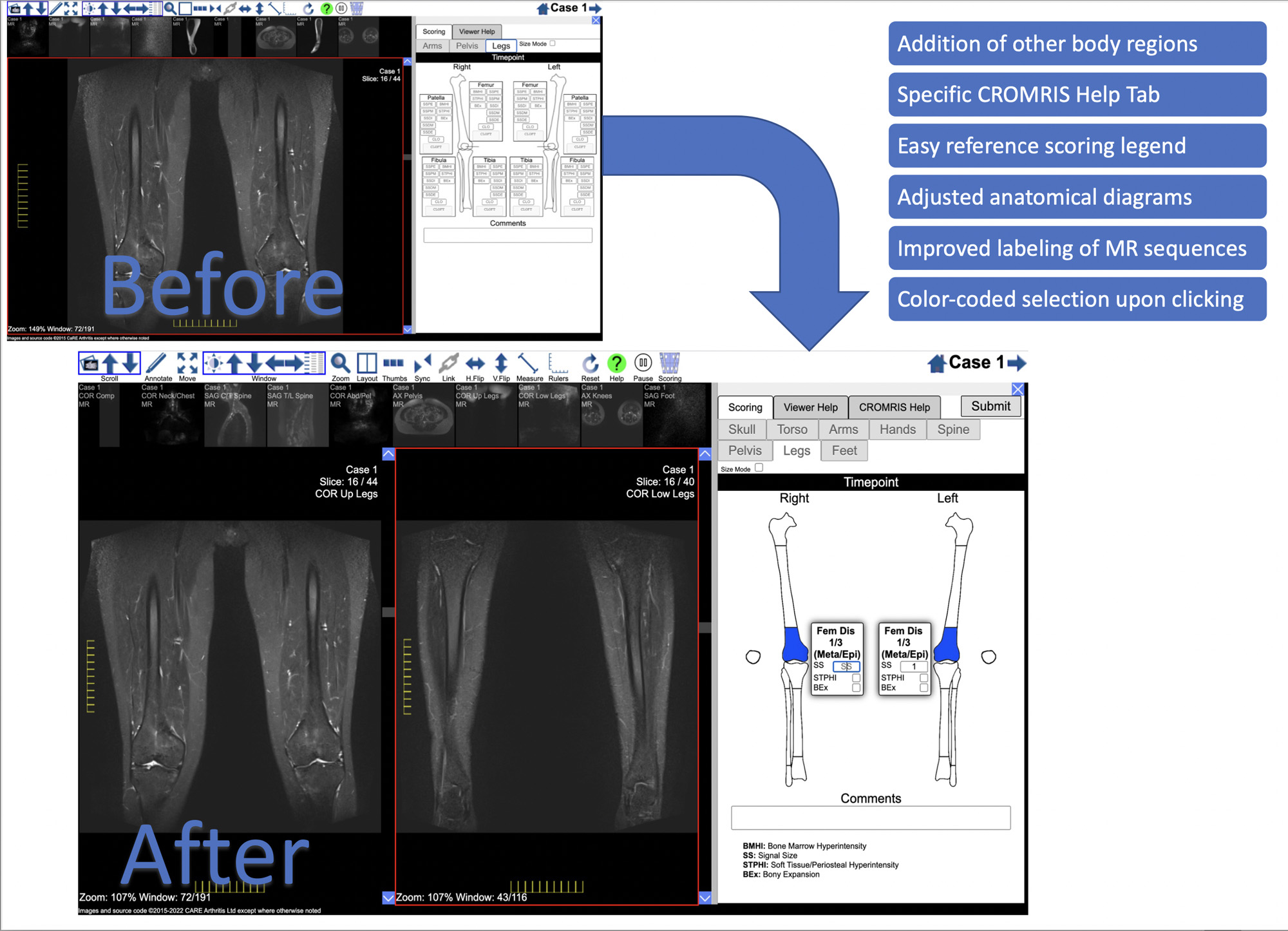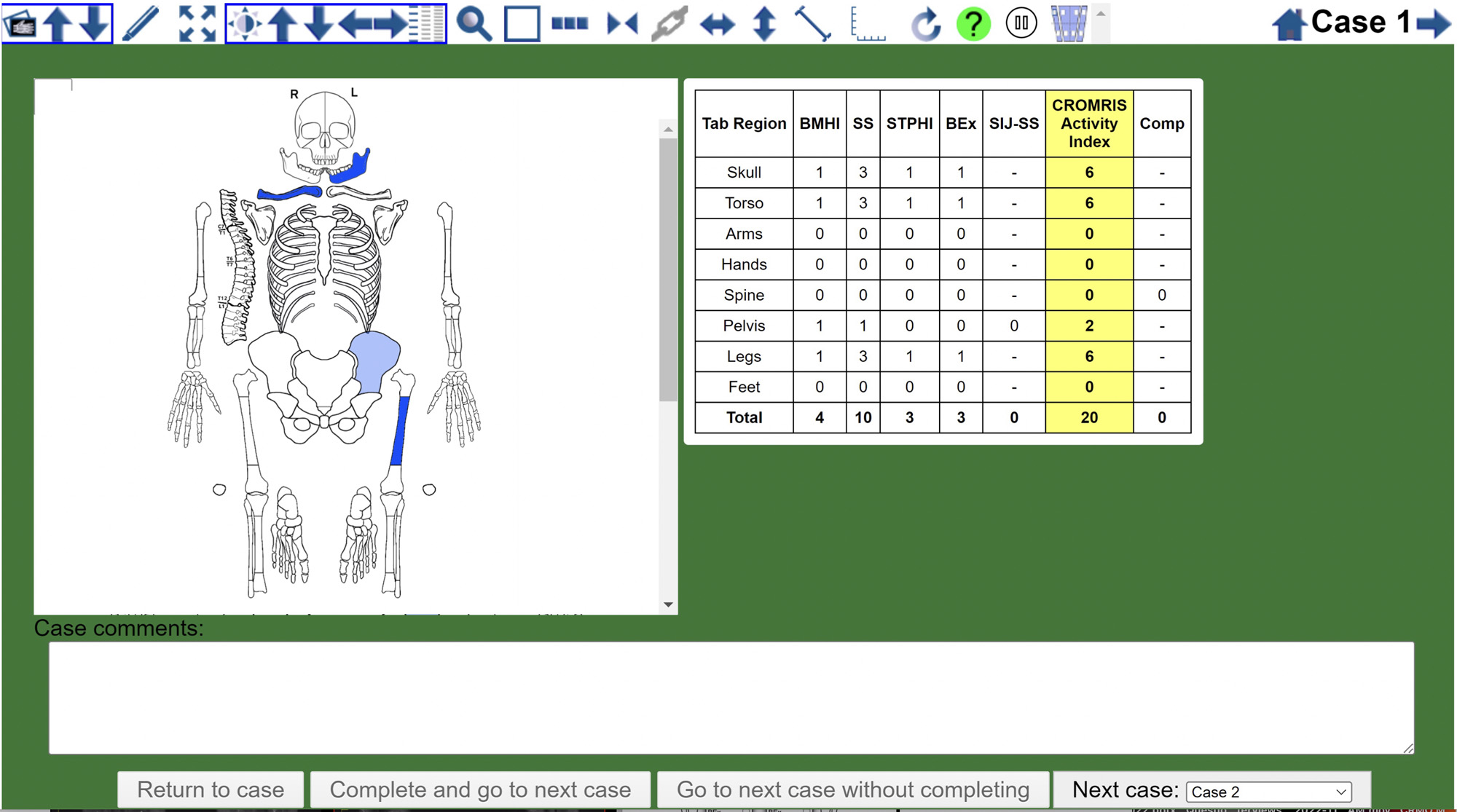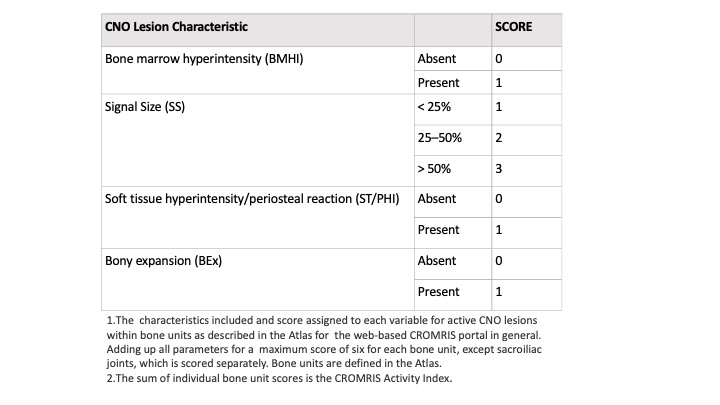Session Information
Date: Tuesday, November 14, 2023
Title: (2039–2060) Pediatric Rheumatology – Clinical Poster III: Potpourri
Session Type: Poster Session C
Session Time: 9:00AM-11:00AM
Background/Purpose: The ChRonic nonbacterial Osteomyelitis Magnetic Resonance Imaging Scoring (CROMRIS) tool was developed but it was not digitized yet. Our objectives are: 1) to adapt the CROMRIS tool to a web-based platform and 2) assess the usability of this system among radiologists.
Methods: A prototype web-based CROMRIS tool was developed by CARRA’s CNO Workgroup and CARE-Arthritis in 2019. Since then, monthly meetings between software developers, rheumatologists, radiologists and an illustrator led to a beta version that included the whole skeleton. A group of radiologists (n=7) provided feedback on the beta version in a demo session on 4/11/22 via semi-structured surveys (#IRB2021-00033). Usability was assessed by surveys using the System Usability Scale (SUS), a Likert scale in which respondents indicate their level of agreement or disagreement on a scale of 1 to 5 for 10 statements on ease of use, effectiveness, and satisfaction in content of use. Feedback was reported with descriptive content analysis, continuous variables as means and categorical variables as percentages.
Results: A clickable-schematic-based CROMRIS was developed to include all body regions [Figure 1]. Notable features are the ability to immediately highlight a schematic region upon selection to directly input scores. Suggested changes included labeling of individual spine and rib segments, insertion of scoring legend on each tab for reference and creation of a summary page with a composite diagram where one can visualize the location and size of lesions by color as well as a numerical CROMRIS activity index [Figure 2]. The general scoring on the portal is indicated by clicking on a bone unit to indicate the presence of bone marrow hyperintensity consistent with an active CNO lesion, which is qualified by other lesion parameters [Table 1]. A video tutorial and MRI Atlas is on the platform for training (https://www.carearthritis.com/mriportal/crmo/index/).Visual factors and anatomical diagrams were among the features “liked best” by the survey respondents. Mean SUS scores increased from 64.5 (below average) to 75 (above average). All respondents agreed that the final version of the web-based CROMRIS was “easy to learn” and found that the “various functions of the web-based CROMRIS were well integrated, and “would like to use the web-based CROMRIS in future clinical trials.”
Conclusion: The web-based CROMRIS portal shows good usability amongst radiologists. Studies of interrater reliability among experienced pediatric radiologists are underway. Once validated, this tool can be used as a semi-quantitative MRI scoring tool to allow for standardization of reporting output of radiological interpretations of MRI in CNO. The authors wish to acknowledge CARRA and the ongoing Arthritis Foundation financial support of CARRA.
To cite this abstract in AMA style:
Nuruzzaman F, Sato T, Carbert A, Paschke J, Potts L, Beer M, Huang M, Iyer R, Monsalve J, Ngo A, Stimec J, Thapa M, Zhang X, Maksymowych W, Ferguson P, Zhao Y. Development and Usability Testing of Web-based Standardized Scoring Tool for Magnetic Resonance Images from Children with Chronic Nonbacterial Osteomyelitis (CNO) [abstract]. Arthritis Rheumatol. 2023; 75 (suppl 9). https://acrabstracts.org/abstract/development-and-usability-testing-of-web-based-standardized-scoring-tool-for-magnetic-resonance-images-from-children-with-chronic-nonbacterial-osteomyelitis-cno-2/. Accessed .« Back to ACR Convergence 2023
ACR Meeting Abstracts - https://acrabstracts.org/abstract/development-and-usability-testing-of-web-based-standardized-scoring-tool-for-magnetic-resonance-images-from-children-with-chronic-nonbacterial-osteomyelitis-cno-2/



